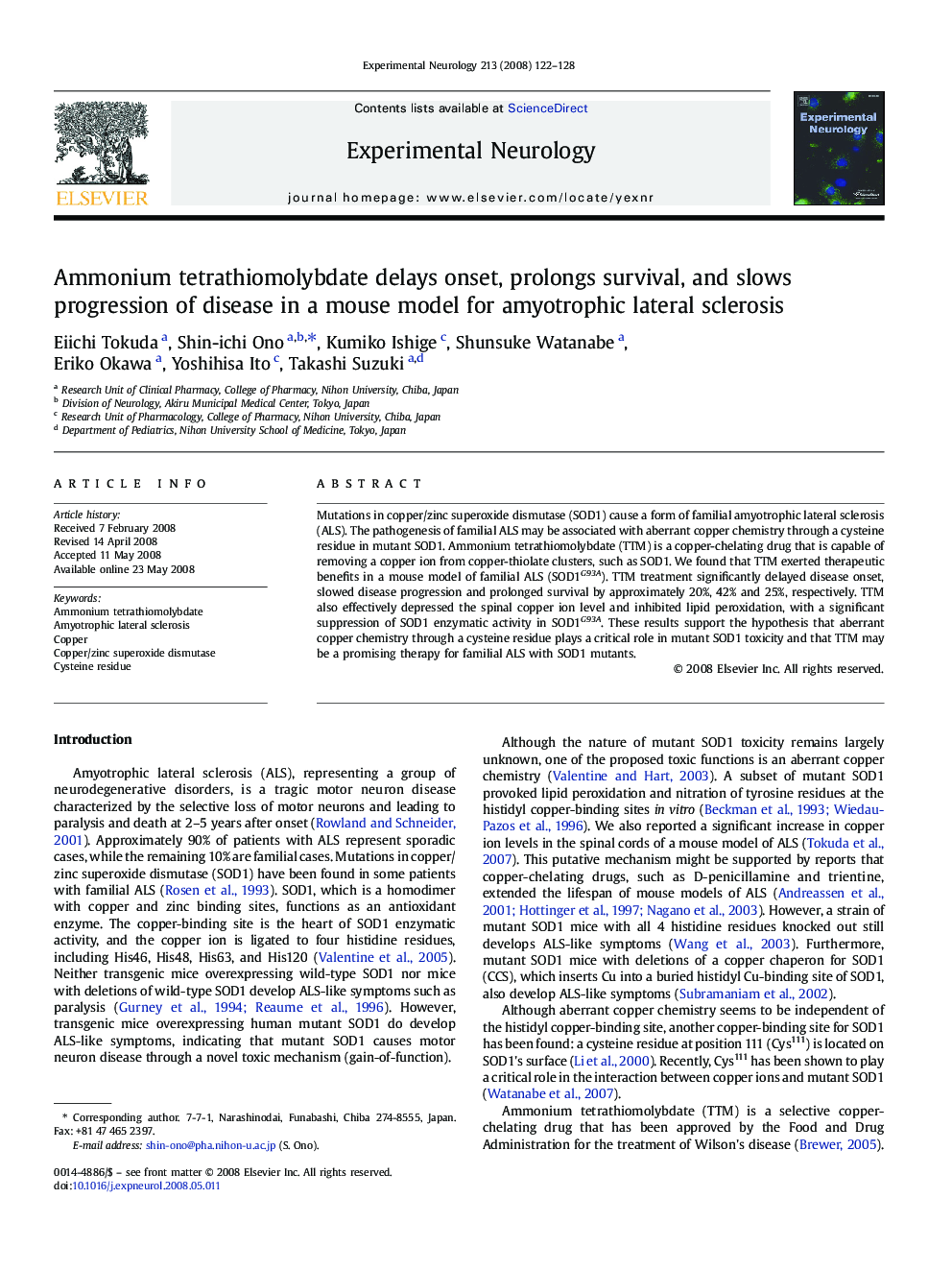| Article ID | Journal | Published Year | Pages | File Type |
|---|---|---|---|---|
| 3056422 | Experimental Neurology | 2008 | 7 Pages |
Mutations in copper/zinc superoxide dismutase (SOD1) cause a form of familial amyotrophic lateral sclerosis (ALS). The pathogenesis of familial ALS may be associated with aberrant copper chemistry through a cysteine residue in mutant SOD1. Ammonium tetrathiomolybdate (TTM) is a copper-chelating drug that is capable of removing a copper ion from copper-thiolate clusters, such as SOD1. We found that TTM exerted therapeutic benefits in a mouse model of familial ALS (SOD1G93A). TTM treatment significantly delayed disease onset, slowed disease progression and prolonged survival by approximately 20%, 42% and 25%, respectively. TTM also effectively depressed the spinal copper ion level and inhibited lipid peroxidation, with a significant suppression of SOD1 enzymatic activity in SOD1G93A. These results support the hypothesis that aberrant copper chemistry through a cysteine residue plays a critical role in mutant SOD1 toxicity and that TTM may be a promising therapy for familial ALS with SOD1 mutants.
